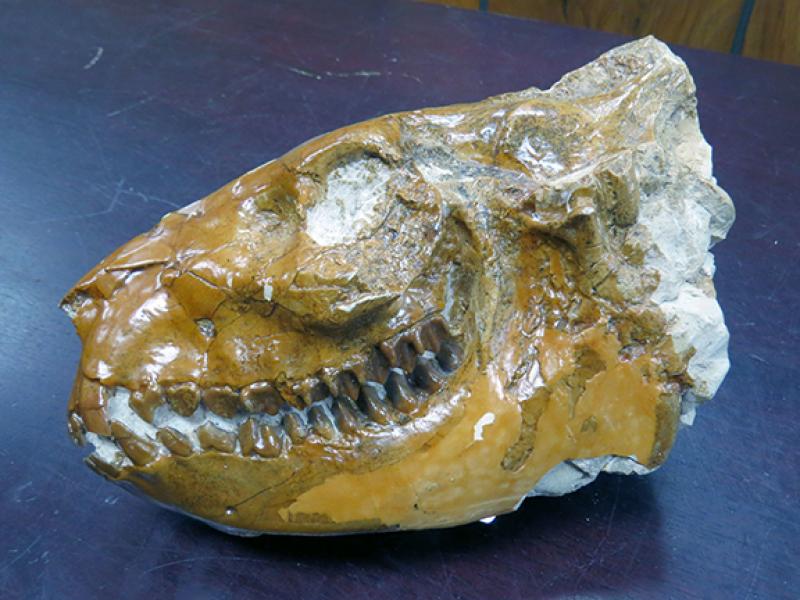
Geologic Wonder of the Month—Oreodont
Oreodonts—extinct relatives of camels
Oreodonts are extinct relatives of camels belonging to the Artiodactyls, also known as “even-toed mammals” because each of their feet has four toes. Most Oreodonts were relatively small, standing approximately 2.5-3 feet high at the shoulder. Orenodont fossils are relatively common in the Oligocene and Miocene beds of North America. This particular specimen, found on display in the Dunn-Seiler Museum, has been covered with a varnish that has turned yellow. In the mid-19th century it was common practice in museums to coat fossils, both vertebrates and invertebrates, with varnish in an attempt to better preserve the specimen. Unfortunately, many of the varnishes were not time-tested and they often discolored, obscuring important features rather than preserving or enhancing them. We will be working to reverse this process when we can acquire the tools necessary to do so.
Notice the teeth in this specimen. Oreodonts had both grinding teeth for chewing plant material and sharper canine teeth in the front, much like their camel cousins.
Stevens, M.S.; Stevens, J.B. (1996). "Merycoidodontinae and Miniochoerinae". In Prothero, D.R.; and Emry, R.J. (eds.). The terrestrial Eocene-Oligocene transition in North America. Cambridge: Cambridge University Press. pp. 498–573. ISBN 0-521-43387-8.